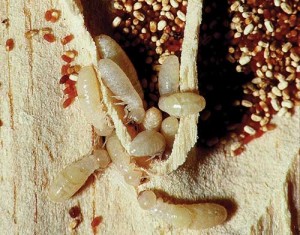Your ability to correctly perform an inspection for drywood termites (Cryptotermes and Incisitermes spp.) can save you time and a lot of money.
However, termites are cryptic and structures aren’t see-through. This is especially true for drywood termite colonies that live completely within what might appear to be sound wood.
How can you increase your confidence that you’re performing thorough inspections? Try these tips next time you’re on the job:
1. Get the facts. This cannot be overstated. If you find an alate or wings, do your best to identify them. At the very least, determine whether it’s a subterranean species (two heavily darkened wing veins) or drywood (three or more). Even if you operate outside the drywood range, you never know what was shipped in from somewhere else.
2. The old classic. If you find drywood termite kick-out holes, cover them up with toothpaste or tape, then sweep up the fecal pellets on the ground. If the termites are still active, they’ll probably push pellets through the covered hole. It isn’t sufficient to only sweep up existing pellets, because any jarring can dislodge and release old pellets, which are indistinguishable from fresh pellets.
3. Bring the heat. If you have an infrared camera, take a blow dryer and extension cord with you to the site. By running hot air over the wood, you’ll be able to clearly see with your infrared camera differences in wood densities in areas with drywood termite galleries. This trick can help illuminate areas that don’t appear to be infested at first glance.
You can reach Dr. Bennett Jordan, entomologist and staff scientist for the National Pest Management Association (NPMA), at bjordan@pestworld.org.

Leave A Comment